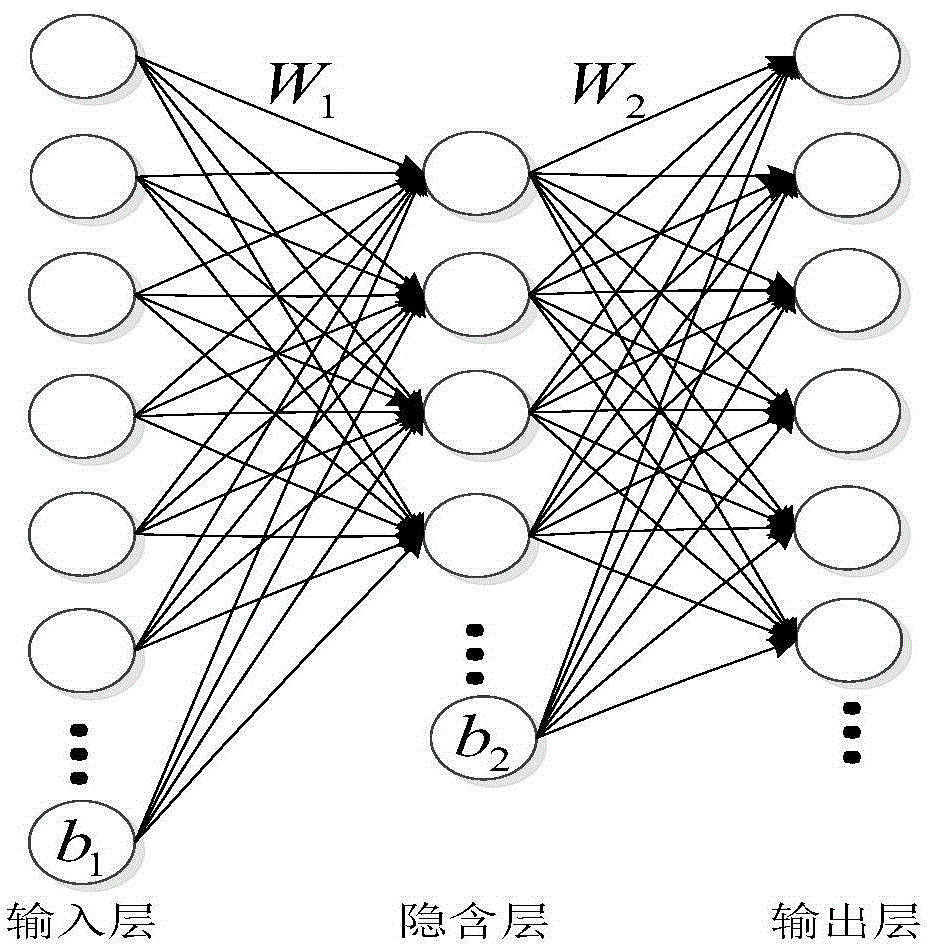Traffic sign recognition method based on spare self-encoding and sparse representation
A technology of traffic sign recognition and sparse self-encoding, which is applied in character and pattern recognition, instruments, computing, etc., can solve the problems of insufficient feature extraction of recognition methods, high computational complexity of classifier design, etc.
- Summary
- Abstract
- Description
- Claims
- Application Information
AI Technical Summary
Problems solved by technology
Method used
Image
Examples
Embodiment Construction
[0038] Such as Figure 4 As shown, a method of traffic sign recognition based on sparse self-encoding and sparse representation, the specific implementation process is as follows:
[0039] Such as figure 1 As shown, the sparse autoencoder used in the present invention has a basic structure of a neural network including an input layer, a hidden layer and an output layer, and the difference is the sample itself that the sparse autoencoder approximates. The input layer of the sparse autoencoder used in the present invention has 64 nodes, the hidden layer has 1600 nodes, and the output layer has 64 nodes.
[0040] The present invention uses the weights between the input layer and the hidden layer of the sparse autoencoder as a dictionary. Firstly, blocks are taken for each type of picture containing traffic signs, and the preprocessed image blocks are used as training samples of the sparse autoencoder. The steps of obtaining the weight dictionary are the training process of the ...
PUM
 Login to View More
Login to View More Abstract
Description
Claims
Application Information
 Login to View More
Login to View More - R&D
- Intellectual Property
- Life Sciences
- Materials
- Tech Scout
- Unparalleled Data Quality
- Higher Quality Content
- 60% Fewer Hallucinations
Browse by: Latest US Patents, China's latest patents, Technical Efficacy Thesaurus, Application Domain, Technology Topic, Popular Technical Reports.
© 2025 PatSnap. All rights reserved.Legal|Privacy policy|Modern Slavery Act Transparency Statement|Sitemap|About US| Contact US: help@patsnap.com



